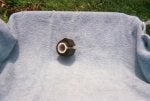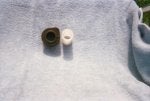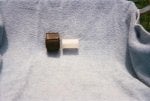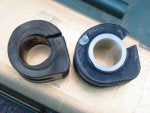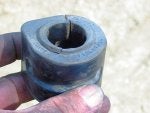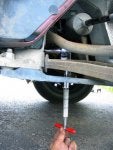As far as lube, I think the need is only for true urethane components. These are so hard, that if they were dry, they would wear quickly as they can't grip well. They will also squeak like crazy. Lube them up, and they will rotate without squeaking, and will not wear.
Rubber or thermoplastic is different. Even this nylon insert is more compliant than urethane. The intent hear is to prevent slipping, which will prevent/reduce wear.
However, from my experience changing my bushings a few months ago (first time), I do not see this nylon insert being a fix. My bushings looked just like the pics on this thread. Like I said in other threads, you notice that the permanent deformation on these bushings is always in the same place...always on the outside ends, facing forward. Why? Because the bar is not straight all the way thru the bushing. It starts it bend while still in the bushing.
If you look at a brand new bushing, newly installed from the outboard end, you will see that (at rest, with the van level), that portion of the bushing is already compressed. It should not be! But these bushings are compressed and being worked 100% of the time, due to either a poor bar design, or a supplier that has never been pressured to hold dimensions properly over the past 12+ years. That's why I'm glad these bushings are so cheap....we'll all be replacing them every few years.
This nylon insert does not address this issue. The insert will simply be pressed into the rubber, and the nylon will eventually crack, in addition to the rubber taking a permanent set.
The answer is to straighten out that bar, such that the bar and the hole are concentric all the way thru.
....or move the bushing/retainer location inboard to where the bar IS straight. Either fix is not as easy as it sounds.


